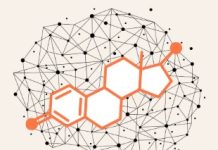Due to the success of the Health & Social Care section within the AG publication, Adjacent Digital Politics Ltd will be producing a health analysis supplement to co-inside with the publication. Within the supplement due to be distributed at the end of March, we will include a number of feature articles which will cover a wider range of topics such as; liver cancer; musculoskeletal disorders; obesity; and, mental health.
Contributors will include:
- Sarah Godman, NHS Confederation;
- John Bowis, Health First Europe;
- Avrid Hallen, Research Council of Norway;
- Vern Putz Anderson, Centres for Disease Control and Prevention
- Rachel Thompson & Sarah West, Cancer Research Fund
- Siriam Radhakrishnan, Frost & Sullivan
Department of Orthopaedics, The Balgrist
We are involved in mediating the biological basis of muscle plasticity, and the functional importance in diseases and the conservation of the musculoskeletal system.
This includes university lectures and research-bound training of master students, PhD students and junior doctors on biomedical projects muscle plasticity in orthopaedics.
Laboratory of muscle plasticity
Our group focuses on the mechanisms of clinical plasticity of skeletal muscle.
With event-driven clinical trials and animal-experimental studies, we are looking for ways to unresolved questions on the preservation and re-establishment of a formalized muscle function in the context of an orthopaedic procedure to answer. Current projects include:
- • Molecular and cellular characterization of the time-course of muscle changes after rupture and repair of the tendon
- • Studies on the influence of genomic factors on muscle plasticity within a rehabilitative intervention
- • Pharmacological interventions to the atrophy of skeletal muscle and the resulting associated increase in intramuscular fat content to stop after the demolition of the tendon.
To answer the biological questions we use modern molecular biology technologies, as well as classic micro-anatomical and biochemical methods to intraoperative biopsy material taken from. Special attention is given to the role of adhesive processes of muscle fiber in the regulation of mechanical properties of the load modulated phenotype of skeletal muscle.
www.balgrist.ch/Home/Forschung-und-Lehre/Orthopaedie/Muskelplastizitaet.aspx
Department of Virology, TU Munich
In the last 2 decades the incidence of obesity, metabolic syndrome and subsequent diseases (Type 2 diabetes and fatty liver disease) have strongly increased in industrialized and developing countries. Concomitantly, cancer incidence has increased. Fatty liver development, non-alcoholic steatohepatitis and concomitant liver cancer is caused by a chronic high calorie diet and a sedentary life style.
At the moment 90 million Americans and approximately 40 million Europeans suffer from a fatty liver. Preventive measures and efficient therapies are needed to prevent this disease form becoming pandemic. Our research group focuses on elucidating the mechanisms how liver cancer develops and aims at generating novel drugs to treat this disease.
www.helmholtz-muenchen.de/en/viro/
The Kielanowski Institute of Animal Physiology and Nutrition Polish Academy of Sciences in Jablonna
The Kielanowski Institute of Animal Physiology and Nutrition in Jablonna conducts fundamental and applied research on farm animals in the field of the endocrinology of growth, development, and reproduction as well as the metabolism and utilization of nutrients and biologically active substances from feeds.
The aim of innovative research is the improvement of the health-promoting qualities of poultry, pork, and lamb meat by reducing their fat content and improving their fatty acid profiles.
The development of digestive tract structure and function in newborn and growing animals and the symbiotic microorganisms colonizing the gastrointestinal tract of herbivorous mammals are also important topics of research.
The University of Strathclyde
The University of Strathclyde is a technological university with Health as a strategic research priority. Drug discovery and development are highlighted in0 the mission statement: New Medicines, Better Medicines & Better Use of Medicines.
The University has a track record of success in drug discovery and development recently exemplified by anti-infective minor groove binders for DNA, a lead antibacterial compound entering clinical trials in 2015, and first-in-class IKKalpha selective inhibitors, which have high potential for treating prostate and other cancers. The article describes work from one team and argues for continued investment in small molecule science and the chemistry-biology interface.
Department of emergency Medicine
Patients presenting to the Emergency Department (ED) with undifferentiated shortness of breath (SOB) can be among the most challenging in terms of the diverse underlying pathology and urgency of appropriate treatment. Until a clear diagnosis is made, several pathways may be pursued simultaneously, resulting in tests ordered with low clinical yield. A patient in extremis may be unable to provide an adequate history, and physical exam findings key to diagnosing causes of shortness of breath may be less reliable. It is unfortunate that most definitive diagnostic tests used for the work up of shortness of breath cannot be resulted in the first critical minutes of a patient’s presentation. It is our belief that the BRIPPED scan, aids Emergency physicians in rapid evaluation of potential causes of shortness of breath.
Oslo University Hospital
Novel treatment to prevent post-thrombotic syndrome after severe deep vein thrombosis
Deep vein thrombosis is a condition caused by the formation of blood clots deep inside a leg. It is an immediate dangerous and sometimes fatal condition. Despite current recommended treatment that involves halting the growth of the clot with anticoagulants, a large number of the patients develop a post-thrombotic syndrome, which is variously characterised by cramps, heaviness, pain, swelling, eczema or ulcer in the leg. We have recently investigated the use of clot-lysing agents administered through a catheter to rapidly dissolve the clot and restore blood flow, a treatment that significantly reduce the risk of post-thrombotic syndrome.
Per Morten Sandset, Research Director and Professor, Oslo University Hospital Rikshospitalet, Department of Haematology, and University of Oslo, Institute of Clinical Medicine, Oslo, Norway














